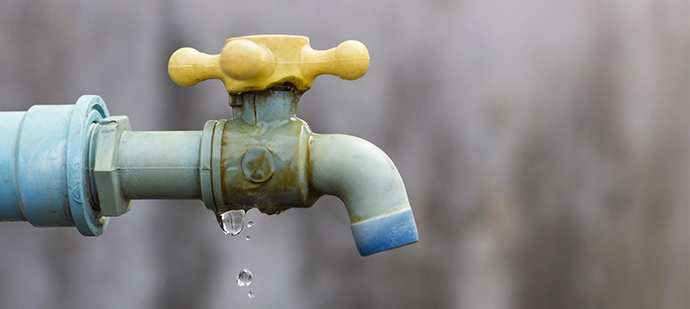Unearthing Concealed Water Line Leaks: Six Proven Techniques
Unearthing Concealed Water Line Leaks: Six Proven Techniques
Blog Article
Have you been in search of facts and techniques concerning Top leak detection hacks?

Early detection of leaking water lines can mitigate a possible disaster. Some little water leakages might not be visible.
1. Examine the Water Meter
Every house has a water meter. Inspecting it is a surefire way that assists you find leakages. For starters, turn off all the water sources. Make certain no one will certainly flush, use the tap, shower, run the washing machine or dish washer. From there, go to the meter as well as watch if it will change. Since nobody is utilizing it, there should be no movements. That suggests a fast-moving leakage if it moves. Furthermore, if you identify no changes, wait an hour or 2 and also inspect back again. This suggests you might have a slow-moving leak that could even be underground.
2. Check Water Usage
Evaluate your water bills and also track your water consumption. As the one paying it, you should observe if there are any discrepancies. If you spot sudden changes, despite your usage being the same, it implies that you have leakages in your plumbing system. Keep in mind, your water bill ought to fall under the same variety monthly. An unexpected spike in your expense indicates a fast-moving leak.
Meanwhile, a consistent rise each month, despite the same practices, reveals you have a sluggish leakage that's also gradually intensifying. Call a plumber to extensively inspect your property, specifically if you feel a cozy area on your floor with piping underneath.
3. Do a Food Coloring Examination
30% comes from bathrooms when it comes to water intake. Examination to see if they are running correctly. Decline specks of food shade in the tank as well as wait 10 minutes. If the shade somehow infiltrates your dish during that time without flushing, there's a leak in between the storage tank and also bowl.
4. Asses Outside Lines
Do not fail to remember to check your outside water lines as well. Needs to water permeate out of the connection, you have a loose rubber gasket. One small leakage can waste loads of water and increase your water costs.
5. Assess the scenario and also evaluate
Home owners need to make it a practice to inspect under the sink counters as well as also inside closets for any bad odor or mold growth. These two warnings indicate a leak so prompt focus is required. Doing routine inspections, also bi-annually, can conserve you from a significant trouble.
Examine for discolorations and also damaging as most pipes and devices have a life span. If you think leaking water lines in your plumbing system, don't wait for it to intensify.
Early discovery of leaking water lines can alleviate a prospective calamity. Some small water leaks may not be noticeable. Inspecting it is a guaranteed means that assists you find leakages. One small leak can squander lots of water and also spike your water expense.
If you presume leaking water lines in your plumbing system, don't wait for it to escalate.
How to Know If Your Home Has a Hidden Leak
Water Meter Reveals Inexplicable Water Usage
If you’d like to test whether or not there’s a leak somewhere in your home, you can do this using your water meter. Here is how to conduct the test:
Don’t use any water in your home for at least 30 minutes; this also means not turning on faucets or water-using appliances.
Go outside, and check your water meter for activity.
If your water meter shows that there was activity, even though no one was using any water, this proves that there is a leak in your home.Visible Mold or Mildew Growth
Leaks behind walls create moist, dark environments that allow mold and mildew to grow and thrive. Eventually, you might see mold growth forming on the wall closest to a hidden leak.
If mold is growing in an area that receives a high amount of moisture, such as a bathroom, it may simply be an indication that better ventilation is needed. However, if you see mold growth on a wall or the ceiling in an area where you would not expect, you probably have a hidden leak.
Musty, Mildew Odor
Sometimes you might not be able to see the mold or mildew that is growing as a result of a leak. However, the smell can give the problem away just as easily. If you catch a whiff of something musty, there’s a good chance that old water is collecting somewhere in your home that you can’t see.
Stained/Warped Walls, Ceilings, or Floors
When your home soaks up water, a variety of red flags can become visible, including ceiling stains, bubbling drywall, warped walls, and sagging floors. While these issues can be caused by excess humidity, they can also be signs that a pipe or plumbing connection has started leaking behind your walls.
Inexplicably High Water Bill
After a while, you get a general sense for what your water bill should be. If you own a pool or sprinkler system, your bill will tend to be higher during summer. However, if you receive a water bill that seems especially high, and you can’t figure out what caused it, then you may have a hidden leak somewhere that’s increasing your bill.
https://www.plumbingjoint.com/blog/2019/july/how-to-know-if-your-home-has-a-hidden-leak/

I am very involved in Hacks to detect leaks and I'm hoping you liked the entire piece. If you please take a moment to promote this post if you liked it. Thanks for going through it.
Stop the flood! Call. Report this page